Does the thought of a big fish towing you around the lake in your boat excite you? We know it excites us because we’ve had this thrilling experience. In freshwater, one of the strongest “tow-trucks” of all fish species is the Lake Trout. They pull like a low-geared winch and seemingly never give up. This article is about Ang and Pete’s lure and bait suggestions, which will hopefully help you decide what is the best bait for Lake Trout fishing.
A Unique Fish Species
The Lake Trout is a distinctive creature of the wild. First, it is not even a true “trout.” It is in the char family as with its cousin, the Arctic Char. Oddly enough, the Brook Trout, Bull Trout and Dolly Varden Trout are also in the Char family. So why are they called trout?
Another characteristic of the Lake Trout is it can not only go about its daily activities in 100-plus-foot deep frigid waters, but it has the ability to inflate and deflate its swim bladder to compensate for changes in water pressure, allowing it to rise safely (avoiding barotrauma) from extreme depths to the surface of a water body.
When fighting a Lake Trout—especially a big one—you will see air bubbles rising to the surface. Once to the surface, you will often hear the fish burping—honestly, they literally burp! It’s actually quite funny hearing it for the first time.
Lake Trout vary in age, but some studies show that they can exceed 60 years. That, friends, is an old fish!
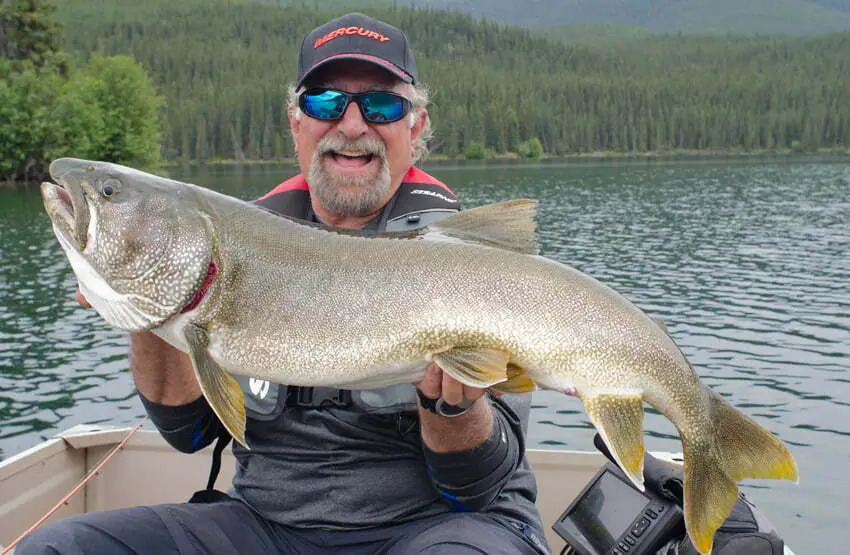
Through the years, we have caught Lake Trout from Quebec to British Columbia. And in that time, we have learned what Lake Trout baits have worked best for us.
In no particular order, here are our Top Five best baits for Lake Trout:
1. Spoons
The spoon may well be the most popular Lake Trout lure of all time. We challenge you to find a more productive trolling lure when it comes to laker-capture fish stats throughout the entire band of Lake Trout waters across Canada. Some may argue this point, but they will likely lose.
Size does matter when it comes not only to spoons but to all laker baits. Depending on the location of the lake, big baits equal big Lake Trout.
If we are fishing Great Bear Lake, we will be dragging a huge spoon on one line, guaranteed. Although these big baits look intimidating, they are a mere morsel to a sizeable Lake Trout.
Important Note: Read this and remember for the rest of this article!
If you think your Lake Trout bait is too big, you are probably wrong—unless we’re talking about that gigantic three-foot Rapala that is for show and not go. We have witnessed 20- to 30-pound Lake Trout coming up from the abyss and T-boning an eight-pound laker that we were fighting at boat-side. Literally, a trout grabbed a distressed trout with full intent to kill and eat that eight-pounder. We’ve actually seen big trout tails sticking out of giant trout mouths. We’ve observed this more than once, and if you talk to any Lake Trout fishing guide from a trophy fishery, they will verify this occurrence.
Trust us; your bait is not too big!
Brand names like Eppinger, Len Thompson and Lucky Strike all produce big Lake Trout.
The two shapes we use most are the standard thick stamped and the canoe style. We will go to a wider bodied spoon every now and then, but only when the previous two aren’t producing.
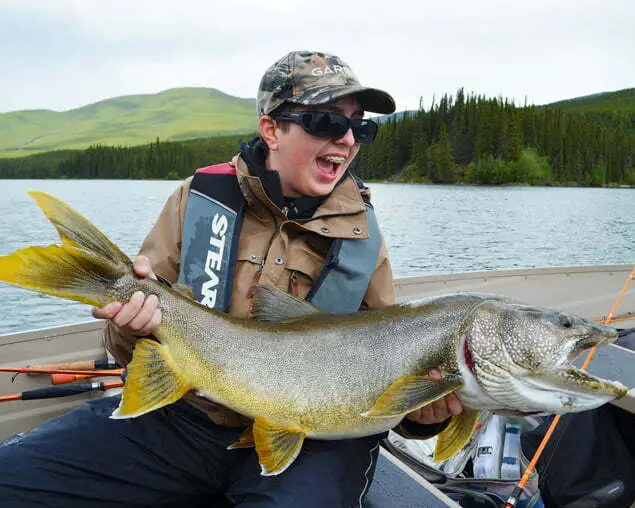
During the latter portion of a past trip to British Columbia, Ang and his grandson Nik trolled spoons to cover a lot of water in a short amount of time. They caught some incredible Lake Trout with this deadly, tried-and-true fishing method.
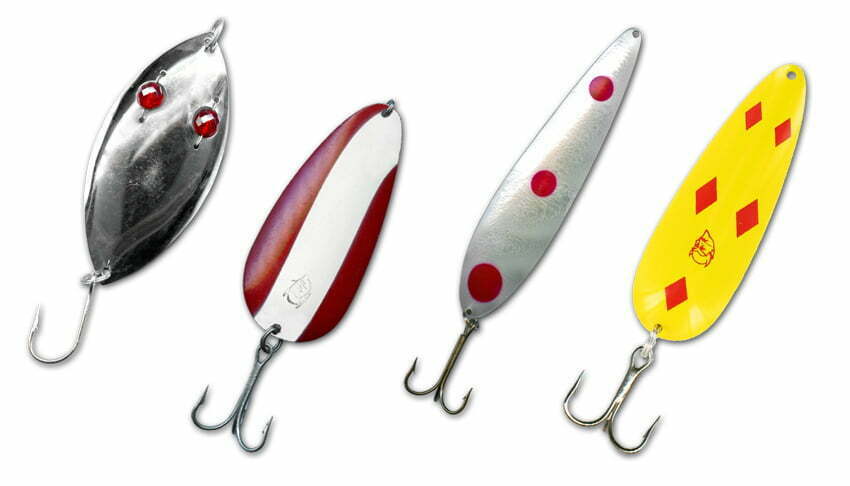
2. Flatfish or Kiwkfish
We learned about this style bait while fishing in the Northwest Territories. While pulling our aforementioned spoons, we heard stories that the spoon bite slowed down, but the Flatfish were on fire.
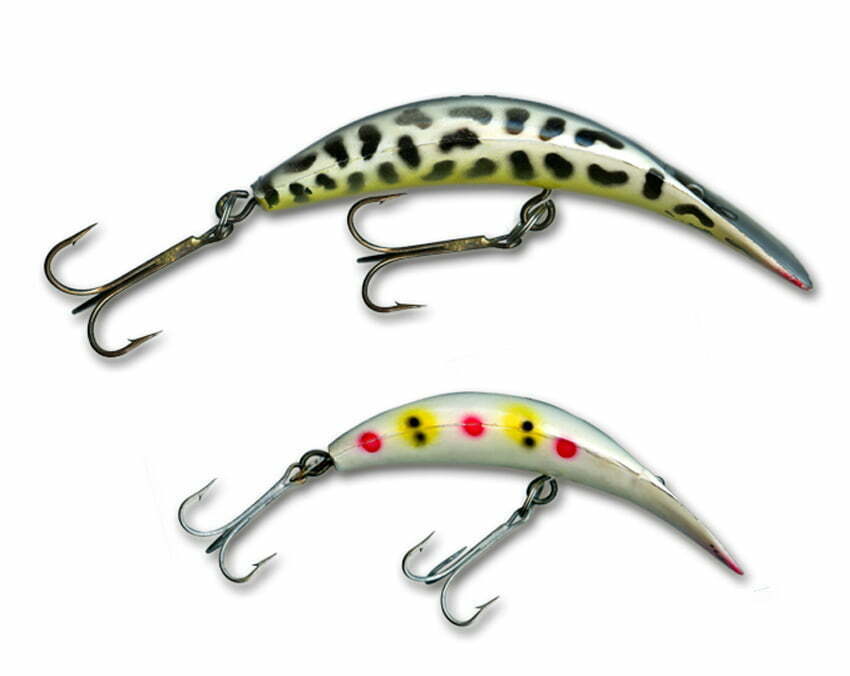
Big, again, was the key. T-55 Flatfish in whatever colour you can find would work. When you look at a T-55 or a T-60, you will soon see why it is a big Lake Trout lure. That thick body produces a unique wide wobble that drives fish crazy.
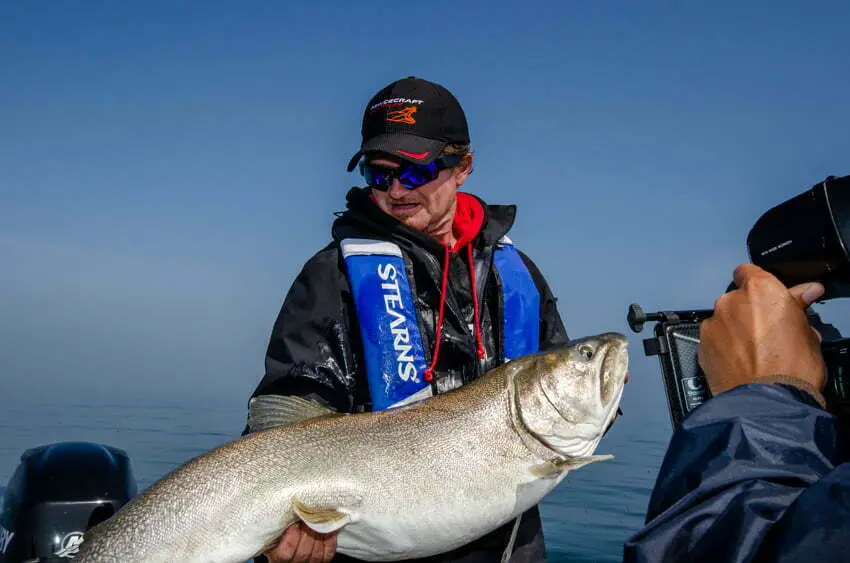
Since those days, we have played around with smaller sizes and have found that we go smaller on the tough days and go crazy with colour choice.
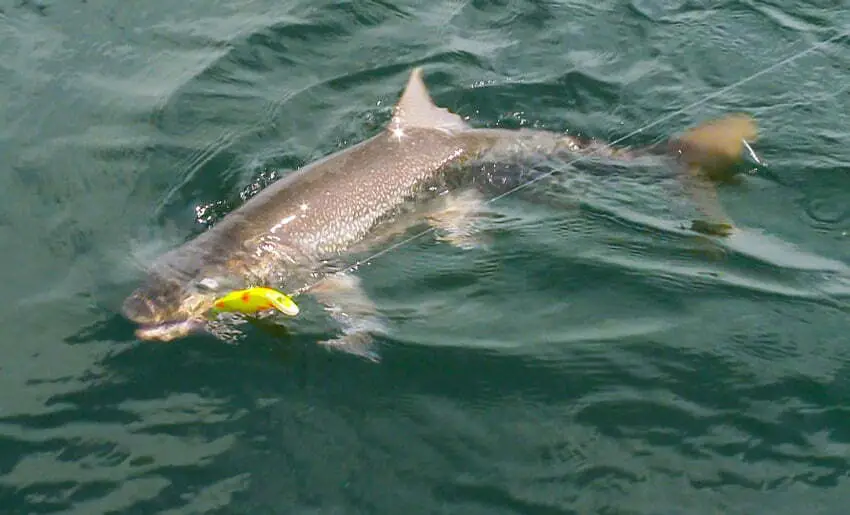
3. Tube Jigs
The Tube Jig is considered a multi-species lure. It is as good on Bass as it is on Lake Trout. The biggest difference is the depth at which it is presented.
Over time, Lake Trout enthusiasts have experimented with soft plastics, like tube baits. What they came up with was that a white tube jig is a killer!
Whether early in the season, up shallow during ice-out, or in the frigid waters under the winter ice, the tube jig is a phenomenal Lake Trout catcher.
During the early season, tie on a white tube with a 3/8-ounce tube head and work the shallows to mid-range depths, almost like you were Musky, Pike or Bass fishing. Make sure, though, that you occasionally (or often, depending on the fish’s activity level) impart action into the tube. These fish often react to the radical movements of a tube jig.
When you’re ice fishing, it’s obviously vertical jigging time. The assistance of a fishfinder is extremely helpful. That way, you can watch how fish react to your tube. Now and then, reel the tube directly up to the hole, enticing an aggressive laker to follow and hopefully strike. There are times when a seemingly lethargic Lake Trout can get fired up with a quick bait sprint towards the lake’s surface. There are other times when Lake Trout will literally swim directly under the ice, as witnessed by The Fish Talk Doc, Gord Pyzer.
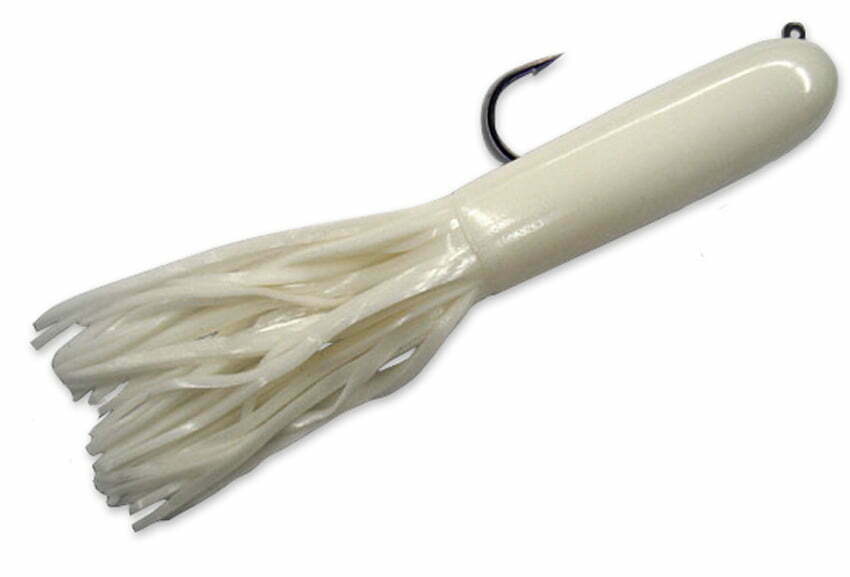
4. Swimbaits
The swimbait is another lure that has transitioned from the bass world and spread throughout the entire fishing universe. Lake Trout anglers have 100% joined the swimbait movement.
Swimbaits for lakers can be used in two basic modes: swimming it, as the name implies, or working it like a jig.
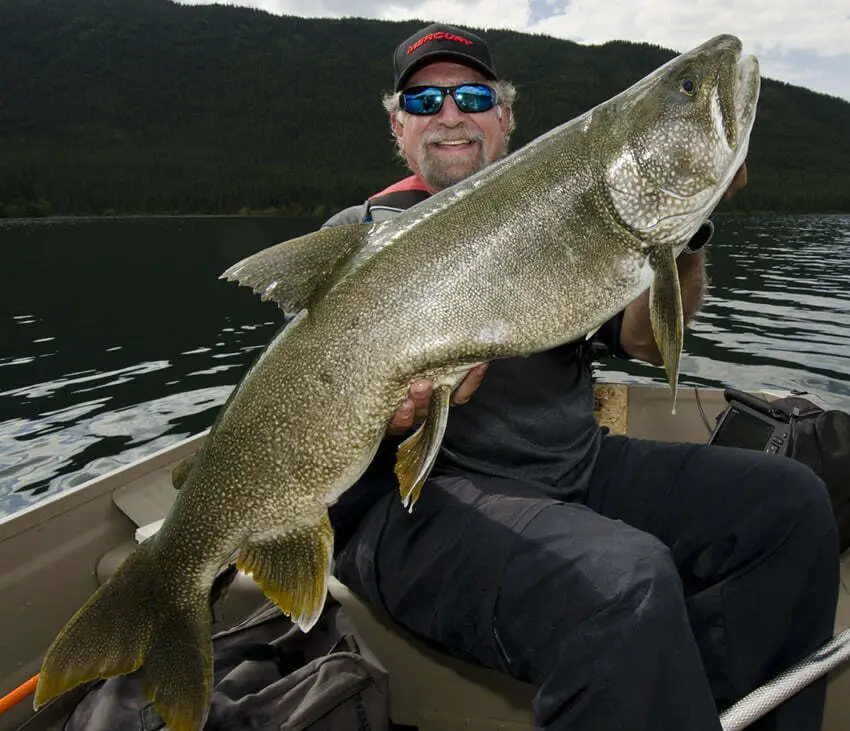
We shot an episode in Northern BC where we used oversized swimbaits in 30+ feet of water and destroyed the Lake Trout. Essentially, we cast out as far as we could from the boat, let the big swimbaits hit bottom, then lifted them and, with full control, slowly dropped them on a taut line. Those western lakers went nuts for it!
Had those fish been in less than 20 feet of water, we would likely have swum the swimbaits back just like we would with a spoon or any other casting bait.
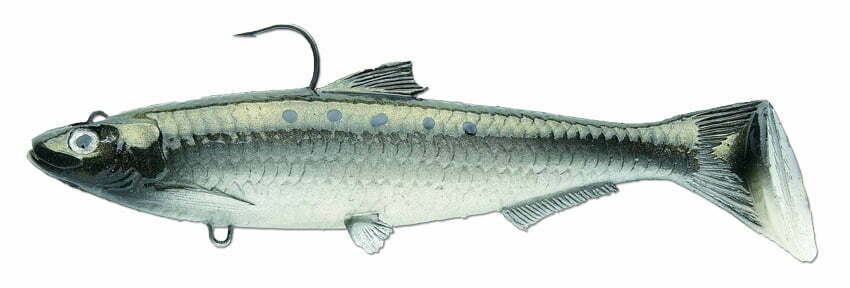
5. Jigs (Spoons and Bucktails)
And finally, the jig—the clean-up bait used pretty much all around the world. Well, laker lovers, the jig is a damn good Lake Trout bait as well. We use two jig types: jigging spoons and bucktail jigs (tubes are essentially jigs, too, but we often use them differently).
The Jigging Spoon
Let’s start with the jigging spoon. This is a bait that we have used since we were kids when ice fishing for Lake Trout. A Mr. Champ or an Acme Kastmaster was the deal. The only choices you have to make were weight and gold or silver. Today there is an array of jigging spoons out there, and they all do a great job catching Lake Trout. The beauty of these lures is they are not limited to ice fishing. They are perfect for any time that a vertical presentation is necessary.
Check out how effective jigging spoons are in this Fish’n Canada episode on late-season Smallmouth. The same technique can be used on Lake Trout.
Find your fish on the fishfinder, drop straight down to them, and start imparting some action. Use your fishfinder to read the body language of the fish and adjust your cadence accordingly.
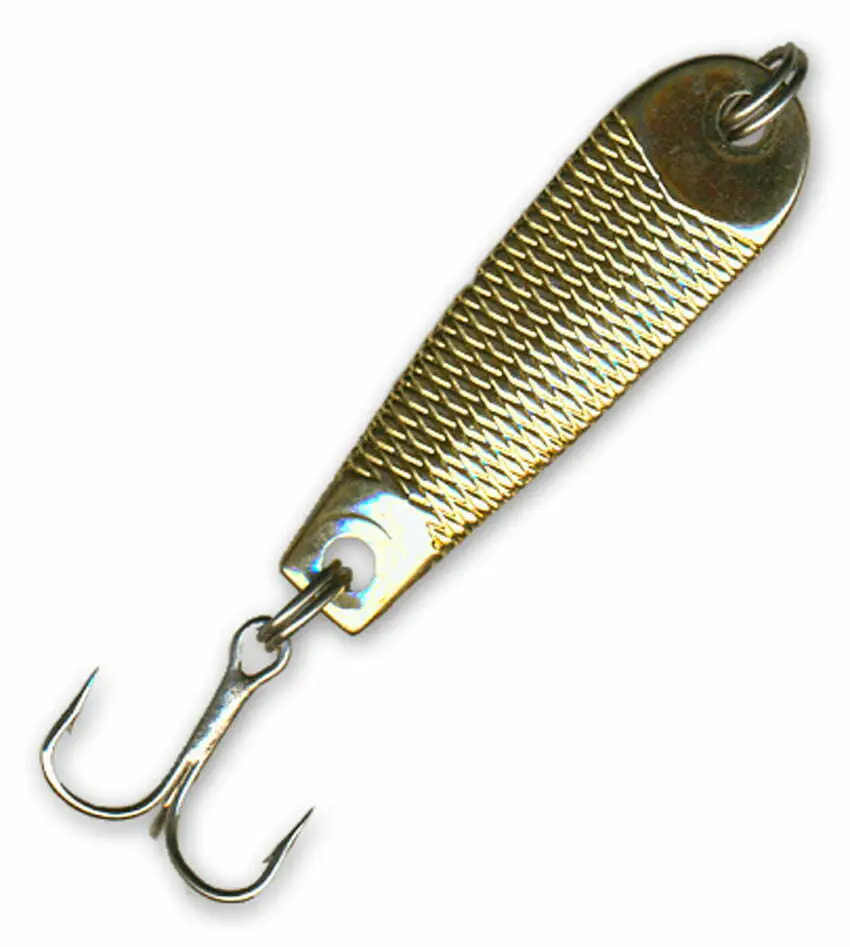
The Bucktail Jig
Next is the bucktail jig—talk about old school!
We got on to the bucktail/laker combo back in our 1998/99 season. We were fishing out of Selwyn Lake Lodge and doing the usual casting for Pike and trolling for Lake Trout. One of the guides asked us if we wanted to go over to a deep hole and vertical jig lakers. We agreed. That guide dropped a gigantic white bucktail jig with a piece of sucker belly straight below the boat and instantly hooked up with a 10-pound Lake Trout. After five or six more fish in as many drops, we were sold.
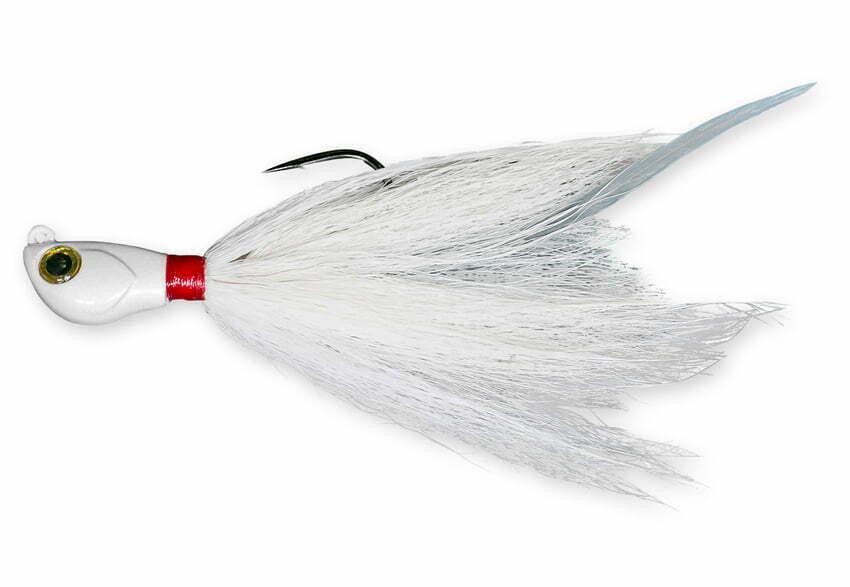
The bucktail is not at all a fancy trout bait. It is simply something that attracts those aggressive bottom-dwellers into taking a swipe.
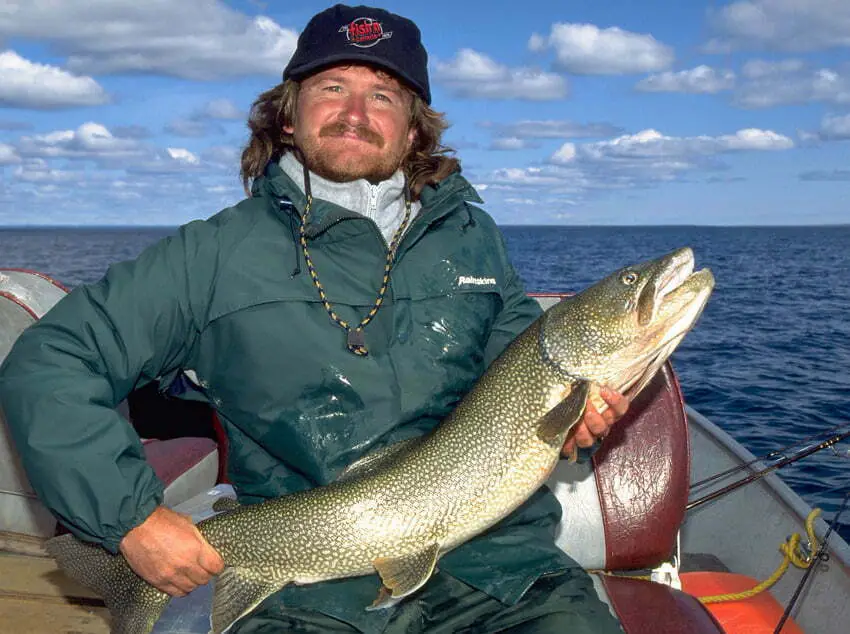
Do not forget your bucktails!
CONCLUSION
As with all our “Top” lists, we realize that there are many more options to be written about. That said, if you were to bring along any or all five of the above suggestions the next time you go Lake Trout fishing, we’re pretty sure you’ll connect to one of nature’s oldest and toughest predators.
Good luck.





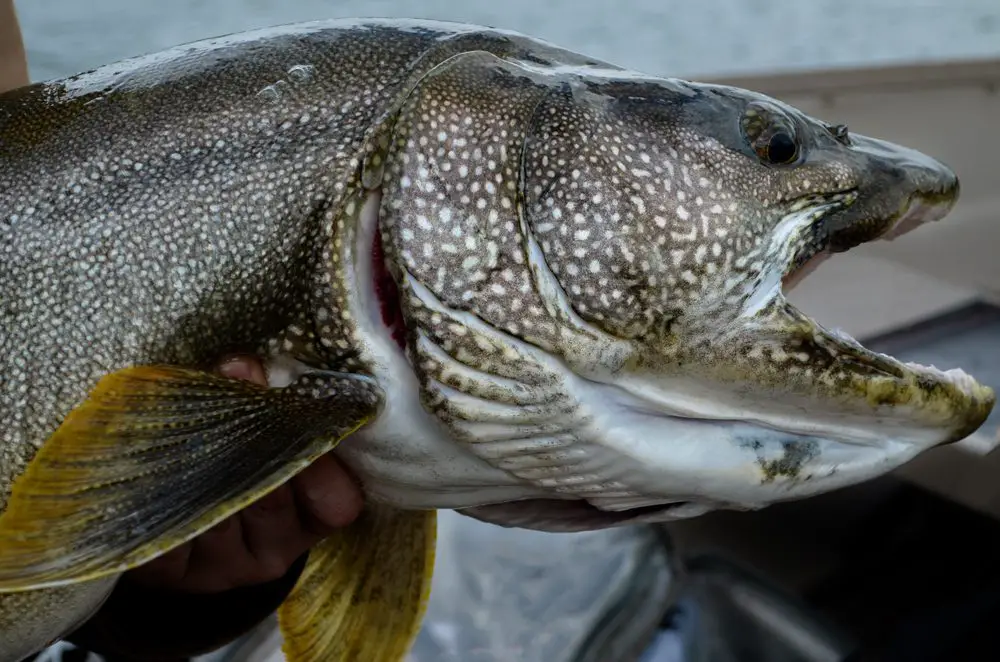
One Response
A lot of good stuff in this article. As they say in a man’s world, “Size does matter”, at least as far as baits go. I have discovered on many occasions,fish are much like people when it comes to their food preferences. Take for example the many ethnic foods around the world. Now considering the many species of fish found throughout the the oceans, lakes, rivers and streams, they too have their ethnic preferences. Add into the mix, both man and fish feed on a variety of different foods as they become available. Menu choices are a big part of any living creatures lifestyle.
Color combinations are also a primary atractant. Just as any chef worth his salt and he will tell you, a well conceived assortment of hues on your dinner plate will get your salivary glands working overtime. Same thing with fish. They are not stupid by any means and are quite adept at determing what a tasty entre looks like in their world.
So the next time you haul out that bulky tackle box, just ask yourself, what you would like to eat for dinner. I bet the fish would agree.